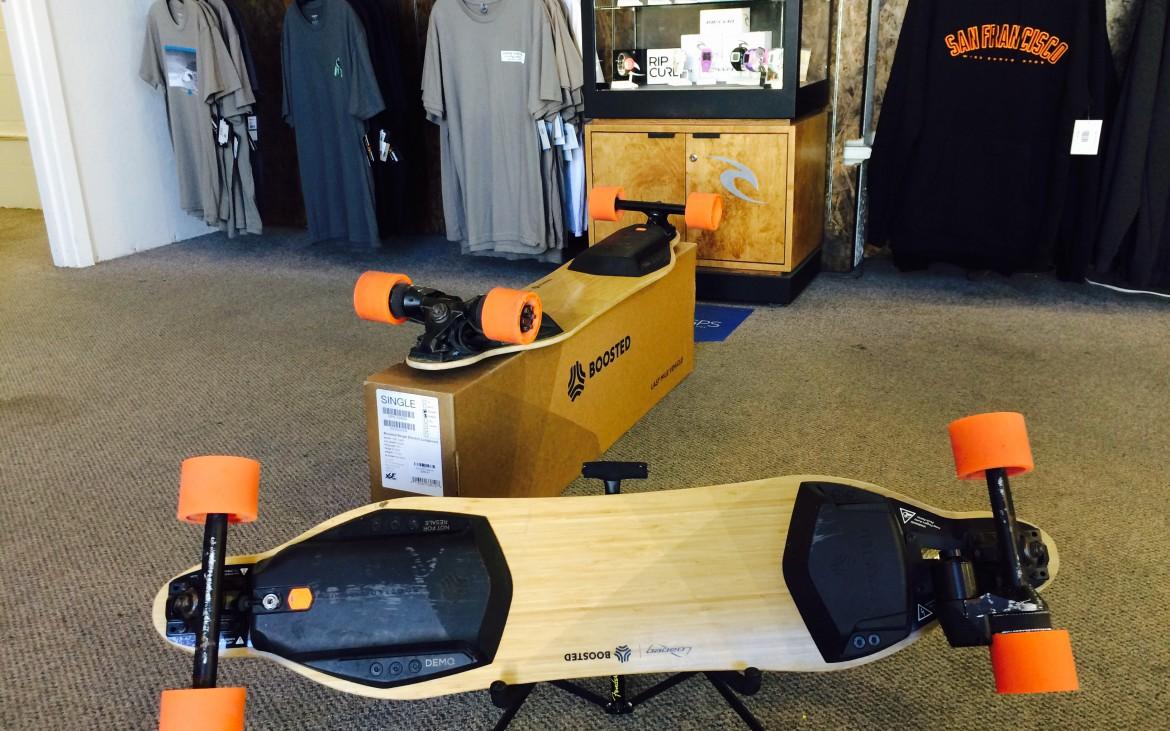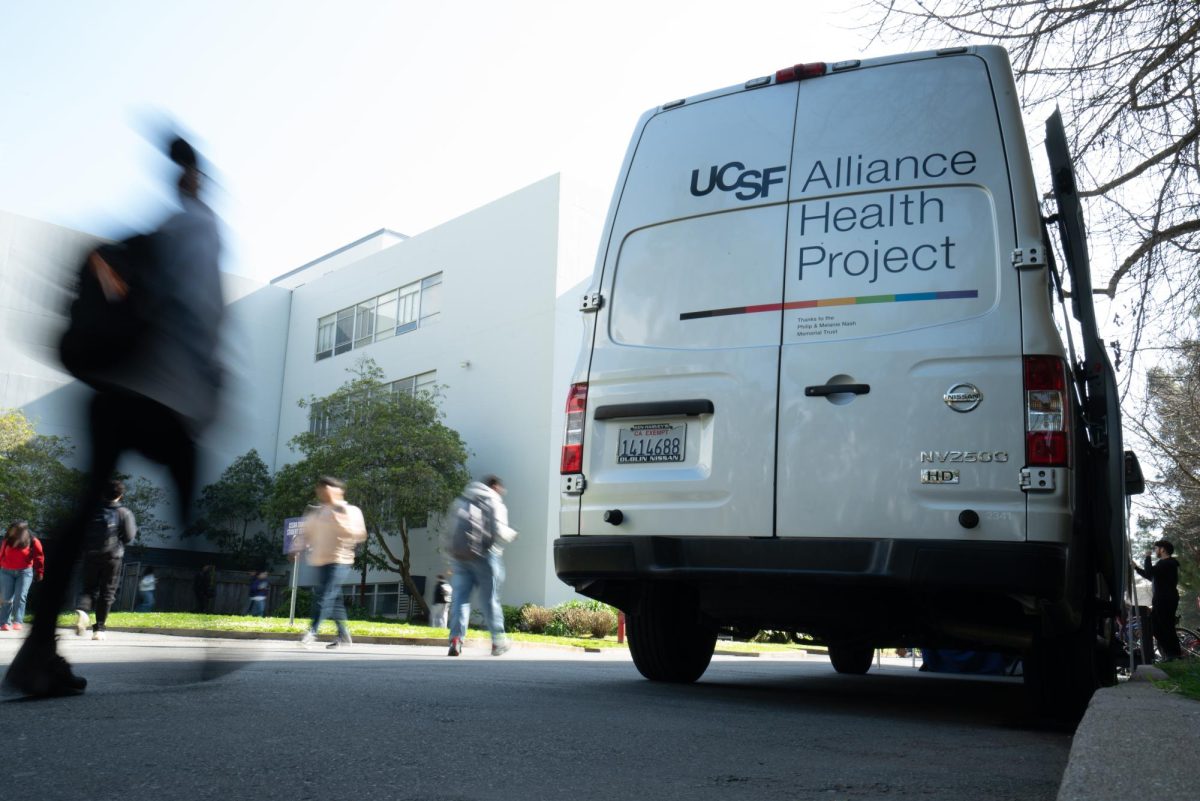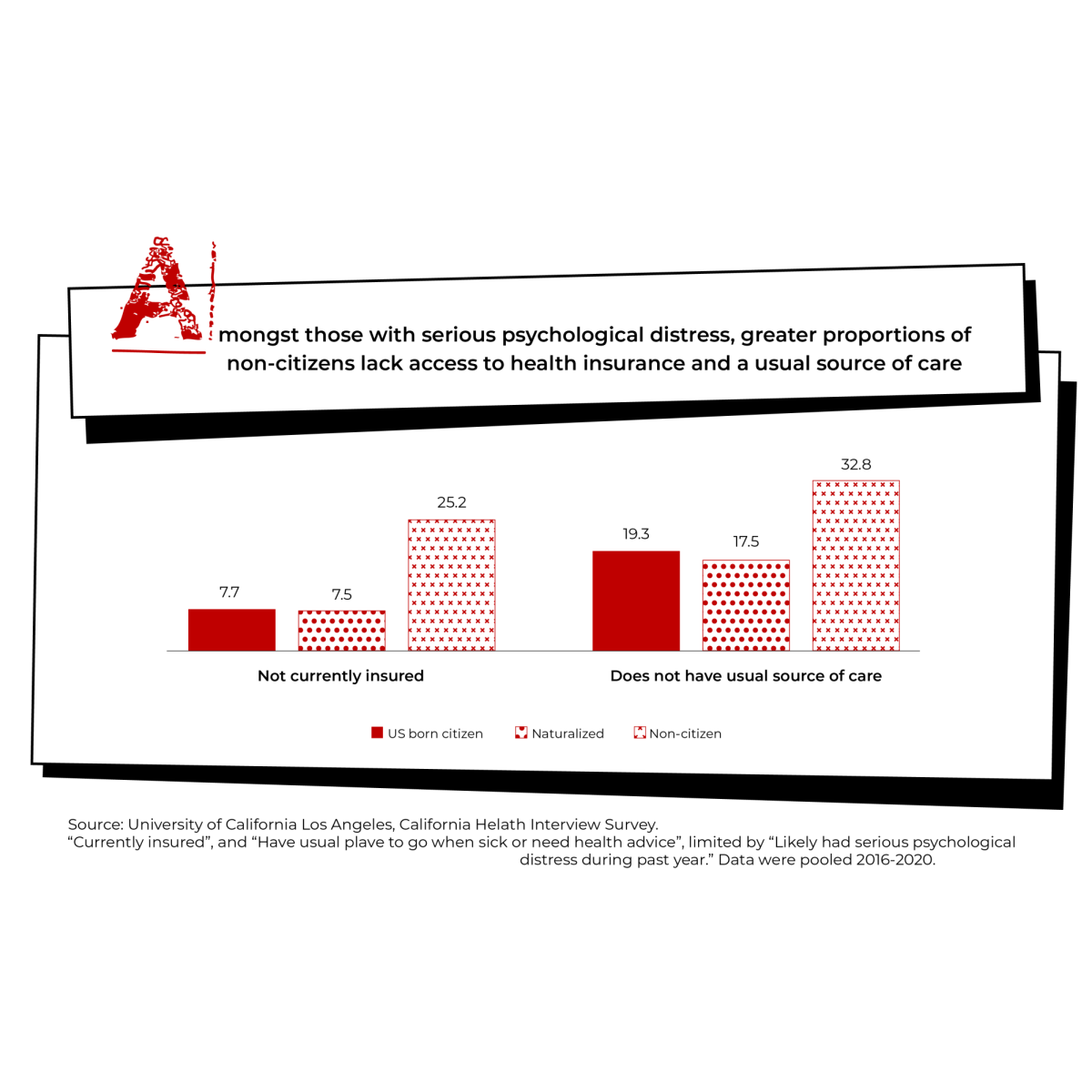Boosted boards are modeled on the floor of Black Diamond Sports in Palo Alto. (Colin Blake/ Xpress)
By Colin Blake
A skateboard is a very analog form of mobility in that the rider is responsible for the propulsion. However, several cities, San Francisco included, have skateboarders whose feet seemingly never touch the ground. Instead, a new skateboard has hit the streets where the rider commands its direction and its speed through a handheld remote control. These skateboards, sold exclusively with bright orange wheels, are the start of a trend in electrically-powered transportation based on the design of decades-old longboards.
Boosted Boards, a company based in Mountain View and founded by three former Stanford students, is the originator and distributor of these boards that are rising to ubiquity in the emerging electronic skateboard market.
“There’s five or six electric boards on the market — Boosted is the best,” said Jon Hoag, owner of Black Diamond Sports, a dealer of electric boards. “It’s the highest quality.”
Structured with a slightly-concave deck made from bamboo that is clad in pitch-black grip tape, Boosted Boards use the best trucks, bearings, bushings, and fasteners, on top of the most powerful electric motors of all electrified boards, according to Hoag.
What’s more, other manufacturers, such as Leiftech, don’t focus on electrifying a skateboard for amplification of the board’s original purpose: linear movement and two-axis control. Quite distinctively, more than a couple boards were designed to recreate the purpose of the skateboard. The Leiftech board in particular is designed to simulate the sliding and drifting of a snowboard, but on city streets.
Boosted, however, forgoes alternative functionality, to instead offer varying degrees of power for each riders’ needs.
Boosted offers three boards across its range: the Single, Dual and Dual+. For the Single, the price is $999 and climbs to $1499 for the Dual+. All the boards are capable of traveling seven to eight miles before needing to charge, but the main difference between them, excluding price, lay in the top speed and how that is achieved.
Capable of traveling at 22-miles-per-hour, the Dual+ features two electric motors that drive the rear wheels. Boosted claims this speed can still be achieved even when climbing a hill at 25 percent grade. Meanwhile, the Single is powered only by a sole motor that drives one rear wheel. The Single can reach a speed of 18-miles-per-hour and is limited to a road grade of 10 percent.
“Probably 95 percent of the boards we sell are the Dual+ model,” said Hoag. “It’s the one that makes the most sense.”
Even though Boosted Boards are selling well, and their performance is adequate, if not great, the real limiting factor to how good electric boards could be is reliant upon battery technology, Hoag said.
When Boosted was developing their prototype board in 2011, lithium polymer batteries were used. After two years of testing, Boosted found that lithium polymer batteries were easily damaged and if overheated, overcharged or punctured the batteries could catch fire.
Now, Boosted has implemented lithium ion batteries, the same battery chemistry used in laptops, phones, and even Tesla vehicles. These newer batteries are lighter, smaller and more powerful than the originals. As a consequence of the battery improvements, the battery pack is tucked tightly under the board leaving the deck unobstructed.
After these hardware upgrades, Boosted was approached by an un-named security firm this summer, which claimed the boards were susceptible to hacking because they are controlled by a Bluetooth remote. Hackers would be able to control acceleration and braking through this hack, which had the potential to launch someone off their board.
The security firm substantiated its claim that caused Boosted to quickly upgrade and encrypt its remote-to-board communication software, fixing the problem for now.
With reliability, functionality, and ease of operation, Boosted has been able to attract people who like the idea of a transportation device that works every time, according to Joe Maloof, a sales associate at Black Diamond Sports.
“The margins for people who don’t know about electric boards, especially Boosted, is getting smaller and smaller,” said Maloose. “We have about 15 boards to rent, and they are always gone.”
Matt Fitzpatrick is pursuing a math degree at Stanford and regularly rides his Boosted Board from campus to downtown Palo Alto. Prior to owning a Boosted, he had never owned a skateboard.
Fitzpatrick bought the middle of the range Dual board. The Dual differs from the Dual+ by it’s slightly slower top speed of 20-miles per hour and different grip tape, otherwise it is identical.
“I bought a basic one because I didn’t want to lose a bunch of money on what is basically an experiment for me,” said Fitzpatrick. “Stanford is really bike friendly, but I kept getting flat tires, so I wanted to try this.”
Chad Dawson is a sales associate at Wise Surfboards, located off Ocean Beach in San Francisco.
“A lot of people who are buying them don’t have cars,” said Dawson. “That’s their way of getting around.”
As San Francisco unceasingly increases its population density, Dawson feels it will become even more impractical to drive or even take a bus if city streets are clogged up. This has prompted many who live in and around San Francisco to consider options like a Boosted board, according to Dawson.
Toni Chi, lives in the Richmond district and bought the Dual+ a little less than a month ago. Ever since he has picked one up, he said his two roommates have taken it for rides and begun to appreciate it even though none of them were skaters prior.
“I don’t have time or money for a car here anymore,” Chi said. “If my friends want to meet me somewhere, they know I’m arriving on the board.”
For Chi, the electric board is not about carving steep San Francisco hills, but transportation.
“I don’t think it’s the lazy way of skating,” said Chi. “People want different things from a board.”





![[From left to right] Joseph Escobedo, Mariana Del Toro, Oliver Elias Tinoco and Rogelio Cruz, Latinx Queer Club officers, introduce themselves to members in the meeting room on the second floor of the Cesar Chavez Student Center.](https://xpressmagazine.org/wp-content/uploads/2024/03/mag_theirown_DH_014-1200x800.jpg)

